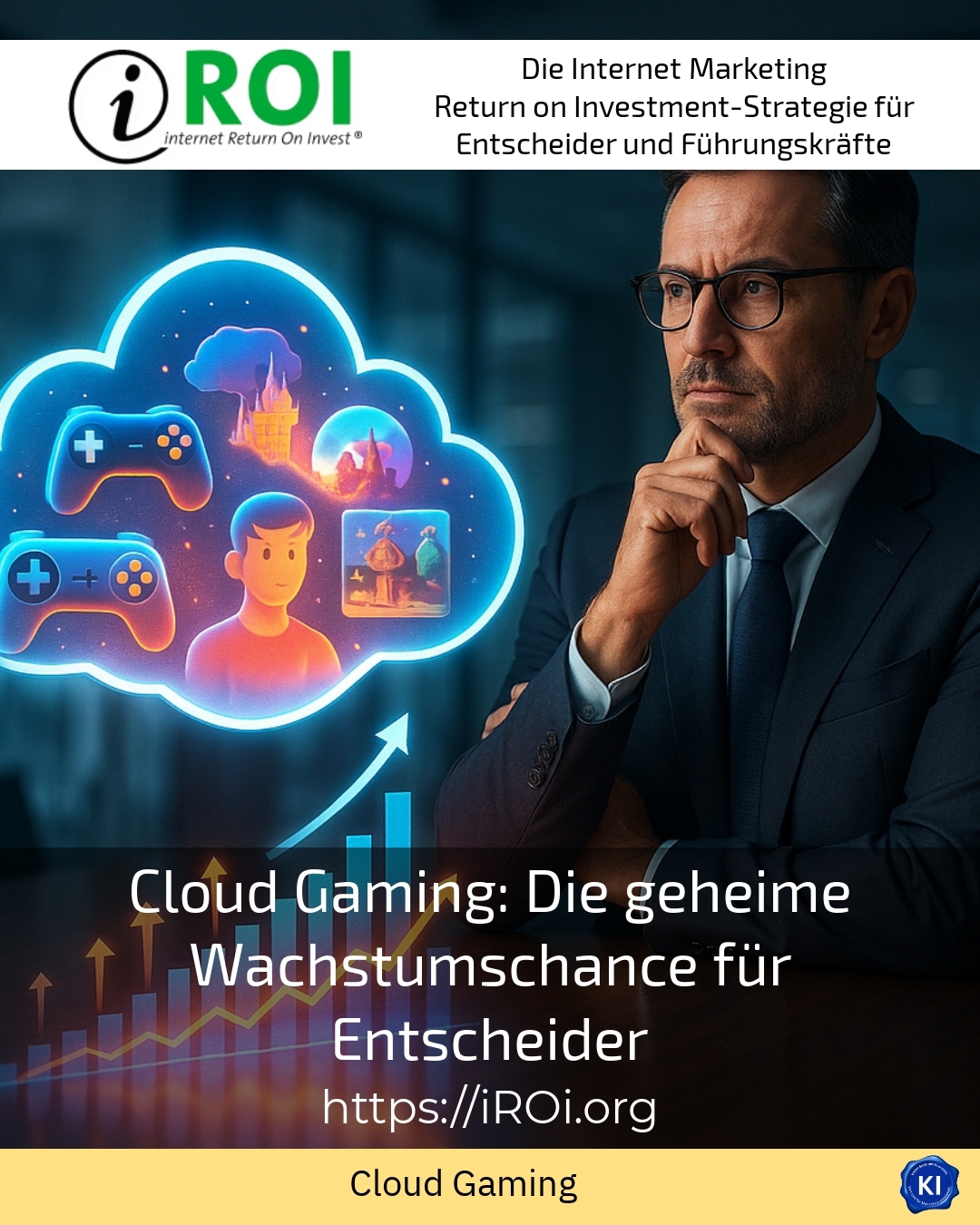Cloud gaming opens up modern opportunities for companies and decision-makers who want to keep their finger on the pulse. Access to top-class games without expensive hardware emphasises the potential of this innovation in the digital age. More and more companies are realising that cloud gaming is not just a trend, but a sustainable growth option that can permanently change industries.
Cloud gaming as a pioneering technology
Cloud gaming makes it possible to stream games directly from the cloud to various end devices. This includes smartphones, tablets, laptops or smart TVs, offering users unprecedented flexibility. Companies in the gaming industry often report that this access also opens up new revenue potential for casual and hardcore gamers because no investment in expensive hardware is necessary[6][11]. For example, Deutsche Telekom's MagentaGaming service offers a platform that delivers over 100 games without downloads or expensive consoles, thus reaching a broad user base[3].
Major providers such as NVIDIA are also combining cloud gaming with high-speed networks such as 5G to minimise latency and ensure a relaxed gaming experience[1]. Technologies such as "network slicing" and "low latency streaming" make it possible to guarantee a stable connection even with high network utilisation. Such technical advances are playing a key role in the growth of cloud gaming.
Practical examples from the industry
In practice, cloud gaming solutions help companies to tap into new target groups. A leading developer studio reported that the integration of cloud gaming has enabled it to reach more users across regions without having to spend a lot of money on hardware support. Smaller studios also benefit from the simple scalability and fast market access.
BEST PRACTICE with one customer (name hidden due to NDA contract) A medium-sized game development provider was able to increase its reach by 40 % thanks to a cloud gaming solution. Users access it via smartphones and tablets, which has significantly reduced the previous hardware dependency. The flexible gaming environment also opens up new sources of revenue via subscriptions.
A manufacturer of gaming accessories is also increasingly focussing on partnerships with cloud gaming services. The compatibility of its peripherals with streaming platforms is becoming an official part of the product strategy. This approach is seen as future-proof in view of market growth.
Technological requirements and tips for decision-makers
The technical infrastructure is crucial to the success of cloud gaming. A high-performance internet connection, preferably with 5G or fibre optics, supports low latency times and stable connections. Companies should therefore invest in such network technologies at an early stage[4][6]. Telecommunications providers such as Deutsche Telekom have already set standards here with innovative network solutions[1].
Choosing the right platform is also crucial, as user-friendliness and the range of services on offer have a significant impact on user loyalty. Offers that also provide attractive access for casual players and combine marketing strategies with subscription models or referral programmes are particularly interesting. In this way, customer loyalty can be proven and sustainably expanded.
iROI coaching as support for cloud gaming projects
Many decision-makers come to iROI Coaching with questions about market analysis, strategy development and scaling cloud gaming projects. The support helps them to master technical, economic and customer-orientated challenges. In this way, impetus can be provided and suitable solutions integrated into the often complex process. Users often report that external consulting helps to accelerate the project phases and makes risks visible.
Another advantage is that targeted coaching can be used to develop a customised roadmap for investments and resource allocation that takes into account both market developments and company-specific characteristics. This helps to build sustainable competitive advantages and optimally utilise the diverse opportunities in the cloud gaming market.
Recognising growth opportunities in the cloud gaming market
The global market for cloud gaming is growing rapidly: forecasts predict that the market value will increase from around USD 15 billion in 2025 to over USD 60 billion by 2032[2][10]. This growth is being driven by the increasing spread of fast networks, increasing access to mobile devices and the benefits of cloud-based gaming.
Many companies are discovering the market as an attractive opportunity to increase their profitability and address new customer segments at the same time. It is particularly noteworthy that cloud gaming reduces device barriers. This means that regions and user groups with less powerful hardware also benefit from access to high-quality games, which further expands the market[8].
My analysis
Cloud gaming offers an innovative growth opportunity that goes far beyond the traditional gaming market. The technology enables companies to respond flexibly and cost-effectively to the needs of current and future users. Decision-makers who rely on modern network structures and versatile platform solutions can strengthen their market position and open up new business areas. iROI coaching provides support in successfully accompanying and strategically managing these developments.
Further links from the text above:
Telekom Presents the Ultimate Mobile Cloud Gaming Experience
Cloud Gaming Market Size, Value, Growth | Global Report
MagentaGaming: Telekom launches its own cloud gaming platform
Size, share and revenue figures for the cloud gaming market up to 2030
Cloud Gaming Services and Their Impact on the Industry - HP
Cloud gaming market - industry size, share & companies
Cloud gaming - an honest disruptor - Taylor Wessing
Forecast for the market share of cloud gaming in 2025
Cloud gaming - Wikipedia
Global cloud gaming market: size, market share and trends
For more information and if you have any questions, please contact Contact us or read more blog posts on the topic internet Return on Investment - Marketing here.
















